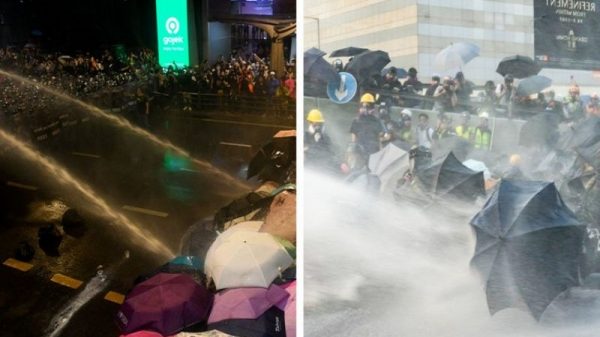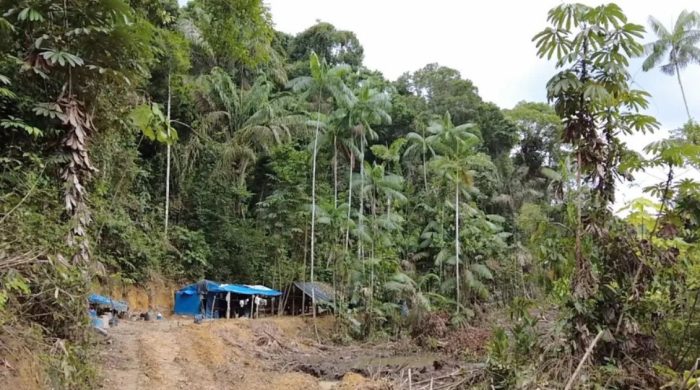Thailand protest: Why young activists are embracing Hong Kong’s tactics

- Update Time : Saturday, October 24, 2020
- 182 Time View

Thai democracy activists are increasingly adopting tactics used by their counterparts in Hong Kong, as they defy a ban on gatherings after months of mounting protests targeting the prime minister and king.
When demonstrators in Bangkok held up umbrellas to shield themselves from tear gas fired for the first time last Friday, it was strikingly reminiscent of the anti-government protests that shook the Chinese territory last year.
From helmets and gas masks to flashmobs and hand signals, Thailand’s student-led movement is drawing on the experience of Hong Kong’s young activists in its own fight for change.
Here are three echoes of the Hong Kong protests in Thailand:
Leaderless movement: ‘We are all leaders today’
After the arrest of many of Thailand’s protest leaders last week, activists have changed tack.
“They think arresting the leaders will stop us,” Pla, a 24-year-old demonstrator, told thousands of protesters at Bangkok’s Victory Monument on Sunday. “It’s no use. We are all leaders today.”
The absence of a centralised leadership was a defining feature of the seven straight months of protests that rocked Hong Kong – and what many say sustained the movement for so long.
While there were figureheads, decision-making was devolved with protesters commonly using online forums and the secure messaging app Telegram to organise – and gather in large numbers quickly.
In Thailand the use of Telegram has skyrocketed in recent days. Protesters have used it to co-ordinate rallies since the government ban on political gatherings of more than four people was implemented last week.
A group started by Free Youth, a key protest collective, reached the maximum 200,000 subscribers soon after it launched. Thai authorities have responded by ordering internet providers to block the app.
While many Thais are joining Telegram as non-protesting observers, active members use the groups to strategise – from where protests should take place to updates on police whereabouts.
Like the Hong Kong protesters, Thai activists have been putting decisions to a vote. On Monday the main Free Youth Facebook page asked supporters if they should take a break by hitting the “care” emoticon to pick a rest and the “wow” emoticon to protest. They decided to keep going.
Thai protesters are now trying to “remain as flat as possible, making leadership open and replaceable”, says Aim Sinpeng, a political scientist at the University of Sydney. “This is very different from past protests in Thailand that tended to be personalised around leaders who are often influential people.”
The use of the hashtag #everybodyisaleader has been growing on social media in recent days, an attempt to “re-pivot the movement… to protect itself from state persecution”, says Dr Aim, whose research focuses on digital politics in South East Asia.
A new language of protest: Hand signs and a ‘jungle phone’
Over the weekend a new language evolved on the streets of Bangkok. The building blocks were borrowed from Hong Kong.
To signal they needed helmets, activists raised their hands in a triangle above their heads. By crossing their fingers they showed someone was injured. Swirling an index finger in an anti-clockwise direction was a warning to disperse.
The savvy use of hand signals was first observed in Hong Kong where they became indispensable for protesters communicating across huge crowds. Thai activists have incorporated this language of signs as well as sprouting homegrown signals shared through infographics on social media.
Since their loudspeakers were confiscated activists have also resorted to other innovative communication methods, says Wasana Wongsurawat, an associate professor of history at Chulalongkorn University.
At a protest in Bangkok on Saturday she watched activists deploy what she describes as “a jungle telephone” to signal police arrivals or request equipment such as umbrellas for those on the protest frontlines.
“Someone would shout ‘the water canons are coming’. Then people in the crowd started repeating the phrase. Within two minutes the message travelled from one end of the demonstration to the other,” Dr Wasana tells the BBC, adding the rally disbanded before the suspected equipment arrived.
Beyond borders: #StandWithThailand
While the Thai and Hong Kong protests are both rooted in unique local grievances, their activists see commonalities in their situations.
In Thailand demonstrators are demanding the resignation of Prime Minister Prayuth Chan-ocha, a former coup leader who became premier last year after disputed elections. They are also urging reform of the country’s powerful monarchy, an unprecedented challenge to an institution shielded from criticism by law.
In Hong Kong, activists have also sought the resignation of their leader, Chief Executive Carrie Lam, as they demand universal suffrage and protest against the rising influence of Beijing in the semi-autonomous territory’s affairs.
In both places democracy campaigners have come to see their political struggles as shared in a new era of protests.
Earlier this year they dubbed themselves the Milk Tea Alliance – a loose online coalition of activists from Thailand, Hong Kong and Taiwan – referring to the classic drink popular in all three places.
Thai protest leaders have often said the Hong Kong movement has inspired them. And Hong Kong activists have expressed their solidarity, offering tips on protective protest wear, internet security and first aid.
Prominent Hong Kong activist Joshua Wong regularly tweets in support of the Thai movement with the hashtag #StandWithThailand. Last week he wrote: “People should not be afraid of their governments. Only governments should be afraid of their people.”
The new generation of protesters in Thailand and Hong Kong have stood out both for their youth and also their skill at harnessing modern technology.
“The culture of protest in Thailand in 2020 is the culture of protest of internet natives,” says Dr Wasana, pointing to how adept the activists are at spreading their messages on social media.
By borrowing from the Hong Kong playbook activists hope to sustain their movement.
“There’s no other example of high school and college kids fighting water cannons and tear gas for such a long period of time,” the historian adds.
The whole nature of protest is shifting across South East Asia, says Bridget Welsh, an honorary research associate at the University of Nottingham in Malaysia.
Democracy activists in Thailand and Hong Kong, as well as countries such as Indonesia and Malaysia, are “adapting to growing authoritarianism in a globalised world” with fast-changing tactics that harness the power of technology and visual representation.
Additional reporting by Thanyarat Doksone and Grace Tsoi





















